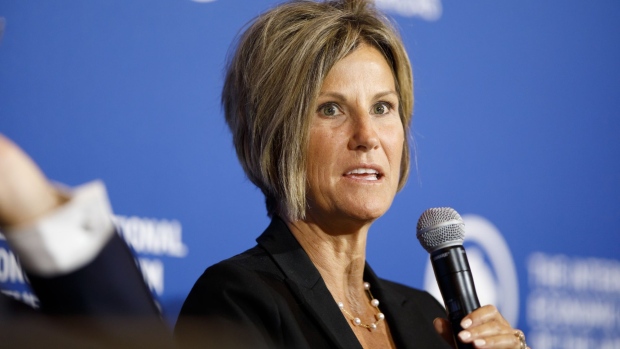Sep 19, 2022
A Solar Fee Risks Pushing Californians to Exit Grid, Sunrun Says
, Bloomberg News

(Bloomberg) -- A potential charge to connect rooftop solar systems to California’s power grid risks spurring more state residents to want to leave it, says the head of America’s largest rooftop installer.
“That’s a perilous path,” Mary Powell, the chief executive officer of Sunrun Inc., said of the possibility that state regulators impose a monthly connection charge as California works to reform its rooftop-incentive program. “You’re just encouraging more to defect. That’s not positive.”
Homeowners with solar systems receive credits from their utility company for the power they generate, and in some cases are able to sell it. The financial incentive has helped solar flourish in California, with at least 1.3 million rooftop systems in the state.
The state's major investor-owned utilities, however, say the savings solar customers now get through the incentive program are so great that they end up not paying their fair share of the costs to operate the power grid. The utilities and some consumer advocates argue this has resulted in a shifting of costs to those who can't afford solar panels.
Sunrun shares fell 3.8% on Tuesday.
The push for economic equity is among the considerations for the state as it moves to modify the incentive program. In addition, officials want to restructure the incentives so people will install batteries along with their solar systems to help meet energy needs when the sun goes down.
An earlier proposal would have slashed incentives for rooftop customers and added new monthly fees, which risked slowing the growth of solar — a key part of California’s push to fully green its grid by 2045. California Governor Gavin Newsom asked the California Public Utilities Commission to rework the plan. At least two solar analysts expect a new proposed plan to be released by state regulators this month. Representatives of Newsom didn’t immediately respond to an email seeking comment.
Read: An Oracle executive’s escape from an unreliable power grid
Exiting the grid could prove challenging for many homeowners. “It’s quite difficult when only using solar paired with storage,” Helen Kou, an analyst at BloombergNEF, said in an email Monday. “A solar-plus-storage system can provide between less than a day to weeks of backup power.”
In an interview Monday at a Sunrun warehouse in the Los Angeles area, Powell said she’s hopeful there will be a “step-change improvement” in the state’s plan.
“Does Newsom really want to be on the wrong side of a customer-led revolution towards a cleaner, more sustainable way to operate the energy grid of the future?” she said.
(Adds shares in the fifth paragraph.)
©2022 Bloomberg L.P.






